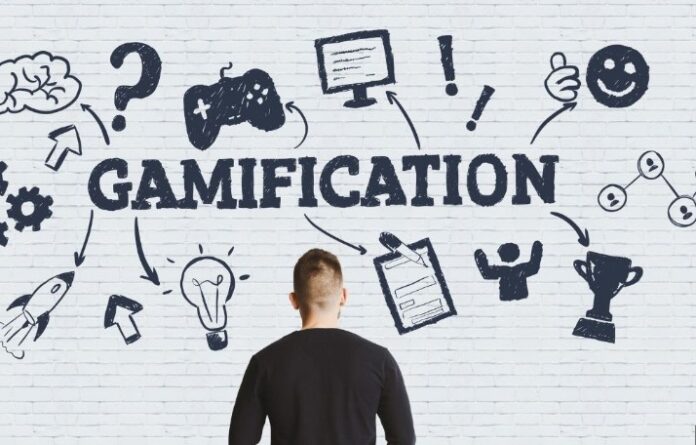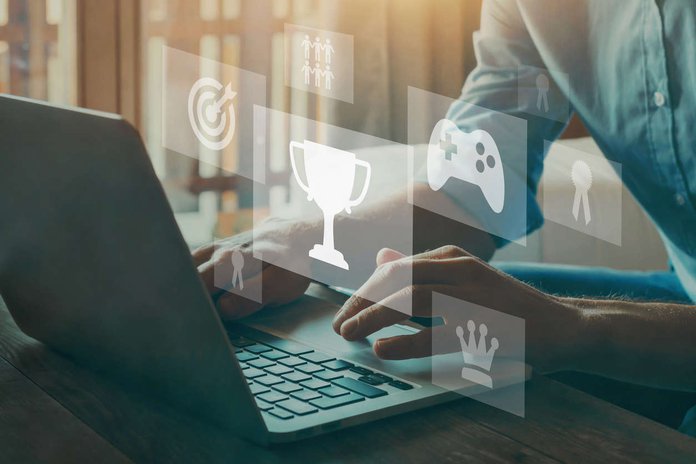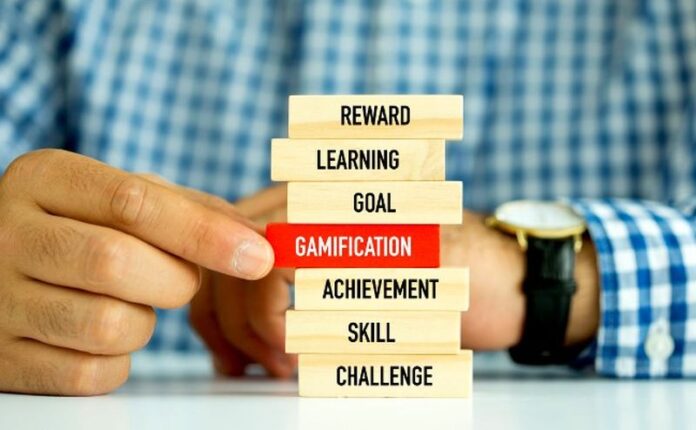The workplace can be a grind, and it can be hard to stay motivated. Fortunately, there are ways to bring some fun back into the workplace, and one of the simplest ways is to gamify your work.
Gamification is using game elements in order to make a task more enjoyable or rewarding, and it has been shown to be an effective way to keep employees engaged and motivated.
In this article, we’ll cover the basics of gamification, show you some examples, and tell you how to apply it to your business.
What is Gamification?

Gamification is a process of making something fun and rewarding. It’s based on the idea that games are addictive because they provide a sense of control and mastery over your environment.
In businesses, gamification can be used to increase productivity and engagement by adding an element of excitement or motivation to work tasks. When done correctly, it can help employees feel like they’re taking part in a challenge instead of just going through the training.
There are three main types of gamified systems: extrinsic (external rewards), intrinsic (internal rewards), and contextual (interactive cues).
Steps To Plan A Gamified Training Program

Step 1: Decide Why You Want to Gamify
The first step is to decide what you want your employees to get out of the game. This might involve thinking about your employee’s learning goals and your company’s learning goals as a whole.
Step 2: Create a Game Experience Around Your Tasks or Activities
Once you know what you want your employees to gain from playing the game, it’s time to create an experience around their tasks or activities. This means designing rules, setting up challenges, and adding specific objectives that reward players on completion.
Step 3: Enable Employees to Earn Rewards Over Time
One of the key features of a successful gamification system is giving employees the ability to earn rewards over time. Don’t make it a one-time achievement. This way, they can continuously improve their performance and feel like they’re progressing in the game.
Step 4: Evaluate Gamification Results Regularly
It’s important to evaluate gamification results regularly in order to ensure that employees are achieving the objectives you set for them. This way, you can make adjustments as needed.
Step 5: Plan Ahead for Future Updates and Changes
Keeping your games engaging and motivating requires regular updates and changes. Make sure you have a plan in place for making these changes as needed.
How You Could Apply Gamification in Your Business

1) Use Gamified Leaderboards and Achievements To Improve The Completion Rate
One common way businesses use gamification is by integrating leaderboards and achievements into their websites or apps with the aim to improve the completion rate. By rewarding employees for success, they feel encouraged to keep up with the competition.
You may use LMS like Lessonly to easily gamify your courses and track employee progress. You won’t need a tech-savvy employee to gamify your training courses and analyze reports, as said in the Lessonly reviews. It’s an easy-to-use and powerful tool to help you make your training more fun and effective.
Badges are another excellent way of motivating employee performance by recognizing excellence through unique symbols or images representing various skillsets and achievements within a company or organization. Badges can also be used for customer loyalty programs – customers who collect certain numbers of badges could receive discounts or other prizes from your company!
2) Encourage Collaboration by Giving Employees Rewards for Working Together
By giving employees rewards for working together, you can encourage them to come up with new ideas and solutions. This way, your team will be more agile and efficient in making decisions.
3) Use Gamification to Drive Efficiency and Productivity
By increasing employee efficiency through gamification, you can reduce costs while still meeting customer demands. This is especially helpful when it comes to time-sensitive tasks like customer service or sales interactions.
4) Use Gamification to Motivate Employees During Cross-Training Sessions
In order for employees to learn new skills, they need to be engaged and excited about the task at hand. By using gamification tactics like leaderboards and badges, you can help them stay focused and motivated.
Benefits of Gamifying Your Business

Gamifying your business operations can bring a number of advantages to an organization. These include increased employee engagement and motivation, improved morale, increased productivity, and better customer loyalty. By introducing game-like elements into the workplace, you can create a more enjoyable environment which in turn will lead to greater success for your business. Let’s look at some of the key benefits in more detail:
Improves Employee Engagement and Motivation
Introducing game-like elements such as rewards systems, leaderboards, badges, and competitions helps to keep employees engaged and motivated as they work towards completing tasks or goals. This creates a more enjoyable work environment while also providing employees with tangible and intangible rewards as they achieve success within their roles.
Boosts Morale
Game-based activities can help boost morale throughout the organization by providing employees with positive reinforcement and recognition for their efforts. This could be through special events or rewards for top performers on leaderboards – whatever form it takes, it’s sure to make people feel valued and appreciated for their hard work.
Increases Productivity
By adding game-like elements into everyday operations and activities within the business, employees are likely to become more productive as tasks become less daunting – after all, if there’s something fun involved then people are often more enthusiastic about getting things done! In addition to this, competitions can help push teams further as they strive to be crowned champions while working together on projects or initiatives.
Enhances Customer Loyalty
By allowing customers the chance to collect badges or earn other rewards through loyalty programs you can enhance customer satisfaction levels which may lead to increased customer retention rates and increased sales long term.
Conclusion

As mentioned above, gamification doesn’t have to be tedious or boring. It can be used to engage your employees and boost their performance by involving them in fun activities. As long as you keep the levels of engagement high, this approach can help you attract new customers while keeping your workforce happy.









